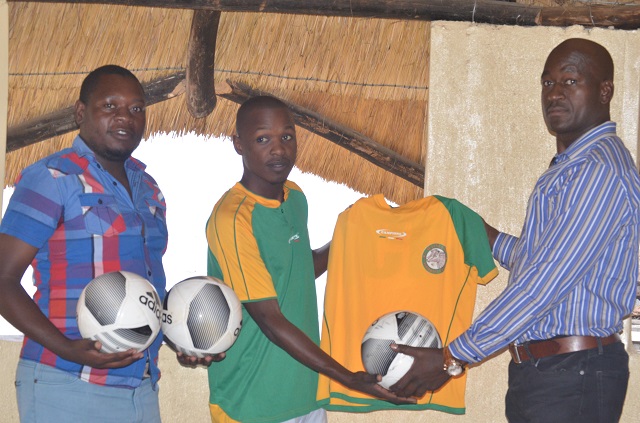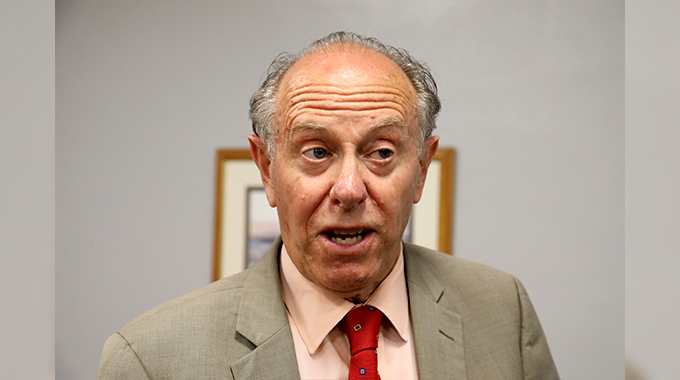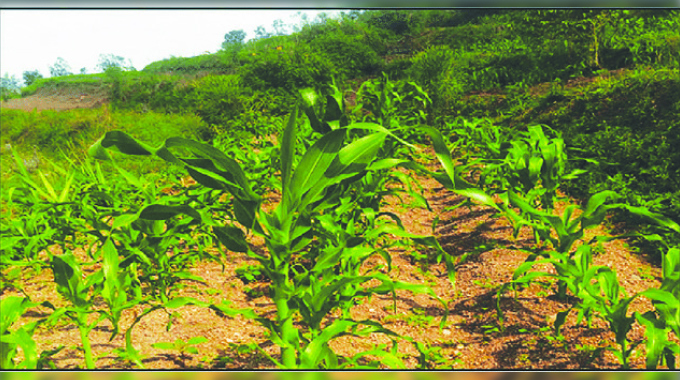Detention centres set up

Patrick Chitumba, Midlands Bureau Chief
AS the country celebrates 37 years of freedom today, much respect goes to the liberation war heroes, both living and departed who were able to survive the brutality and dire living conditions they experienced at various detention centres and prisons in Rhodesia.
During colonialism, blacks were forced out of their productive lands and pushed into reserves where stones grew better than plants and rainfall rarely visited.
For taking up arms against the injustices that were perpetrated and perpetuated by the white settler regime at the height of the nationalistic movement in the country, the liberation heroes were treated with utmost cruelty.
They were deemed criminals who deserved punishment by death for demanding what was rightfully theirs.
Most of them were arbitrarily arrested and thrown into detention centres that were built specifically for the purposes of muzzling and curtailing the revolutionary movements that were growing in the early to mid-1960s.
From the 1960s, Rhodesian authorities had begun amending and legislating laws which allowed nationalists — freedom fighters — to be detained for having opinions which posed as threats to the maintenance of “law and order.”
Nationalists suspected of actively supporting the liberation struggle, but did not commit any prosecutable crimes, risked being detained as saboteurs, agitators, or provocateurs.
These detainees were not “criminals” but were detained nonetheless for holding political opinions that were contrary to the Rhodesian regime’s.
And to deter would-be freedom fighters from taking arms against the colonialists, isolated prisons or detention centres were developed.
The oppressive white regime established three major centres of detention at Wha Wha in Gweru’s Midlands province in February 1964, Gonakudzingwa in Chiredzi District of Masvingo province in April of the same year and Sikombela in Gokwe South District in Midlands province in June 1965.
These three detention centres were constructed as a quick response to the growing number of Africans who felt the need to fight the repressive, arrogant, snobbish and hypocritical white regime.
There were striking similarities in the geographical location of the three detention camps. Apart from providing punitive accommodation to the black nationalists, the camps were established in remote and impassable parts of the country.
Despite the horrific and brutal conditions detainees were subjected to at the hands of Ian Smith, they refused to give up hope and endured the fight that would eventually bring independence.
With Ian Smith in 1966 saying, “I don’t believe in black majority rule ever in Rhodesia – not in a thousand years. I repeat that I believe in blacks and whites working together. If one day it is white and the next day it is black, I believe we have failed and it will be a disaster for Rhodesia”, it had to take courageous sons and daughters to leave the comfort of their homes and intensify the war against colonialism.
As the country celebrates 37 years of independence across the country’s 10 provinces, The Chronicle tracked down some former inmates at Sikombela and Gonakudzingwa detention centres in Gokwe and Masvingo respectively who have no kind words for Smith and his regime.
Sikombela served mainly as a Zanu detention camp. It is where nationalist leaders such as President Mugabe, the late Cdes Simon Muzenda, Enos Nkala, Eddison Zvobgo, Edgar Tekere and many others were detained at the height of the struggle while most of those from Zapu were detained at Wha Wha and Gonakudzingwa.
A Chronicle news crew visited Sikombela detention centre — which is now a forest following the destruction of all structures that once served as cells for the gallant sons of the soil who were detained there.
What remains at Sikombela is just signage labelled “Sikombela National Monument”.
While the government and former inmates appreciate the fact that Sikombela — located along Empress Mine Road in the Chemagora area of Gokwe — used to be a feared detention centre, there is nothing to show people that President Mugabe and his fellow nationalists were once detained there.
A former inmate at Sikombela, Cde Thomas Ziki (80) said as the country celebrates independence — people should not forget the fact that blood was lost during the armed struggle.
“Sikombela reminds me of the period which I don’t want repeated, a period of slavery and oppression. Anyone who dared criticise the colonial regime was considered a traitor or saboteur who deserved nothing but to be isolated from other people. When we arrived at Sikombela — the area was infested by tsetse flies and mosquitoes and medication was not readily available. The inhuman conditions made us stronger until we were moved to Harare Maximum prison,” said Cde Ziki.
He said, some people would smuggle letters and information about the war in and out of the detention centre.
As a result, Cde Ziki said, they were able to keep up and strategise accordingly until they were moved to Harare Maximum Prison.
“We had communication with the outside world through some people who would smuggle in and out letters or notes,” he said.
Another inmate, Cde Solomon Marembo said he was arrested while in Masvingo by colonial settler forces for fighting against oppression and was detained at Wha Wha Prison and Sikombela before he was transferred to Harare Maximum Prison after Smith’s Unilateral Declaration of Independence.
Describing Smith as evil, Cde Marembo said he met other gallant sons of the soil who included Cde Mugabe who were adamant to end Smith’s rule while at Sikombela.
“Other than Sikombela, we had other freedom fighters detained at Gonakudzingwa while women were detained at a prison in Marondera. Some were put under house arrest and today’s independence is as a result of such people who sacrificed their lives, families, careers to fight for this country,” he said.
Cde Marembo, who was to be a special delegate to the Lancaster House Conference in 1979 said the country’s independence, should be cherished because it did not come on a silver platter.
Leaders of the revolution from Zapu who were detained at the notorious detention camps include Cdes Joshua Nkomo, Naison Ndlovu, Sikhanyiso Ndlovu, Josiah Chinamano and his wife Ruth Chinamano, Joseph Msika, Jane Lungile Ngwenya as well as Chief Mangwende, Cdes Gini Ntuta and Willie Musarurwa among many others.
Gonakudzingwa detention camp was established in the extreme eastern parts of the country near the border with Mozambique in the Chiredzi District of Masvingo province.
It was located within the expansive wildlife zone of Gonarezhou, an area that was and is still famed for being home to big fauna such as elephants, buffalos, lions and rhinos.
The place, according to a former inmate, Chief Chiwara (91) from Masvingo remains desolate in its present form but still captures the imagination of anyone who visits it and inspires the quest for an in-depth understanding about the life, values and experiences of nationalists who spent years in the jungle in pursuit of freedom.
He said resources should be channelled to preserve the detention centres, declare them national monuments as well as market them as tourist attractions.
“Had it not been for the tears, sweat and blood of the gallant sons and daughters of this land, both dead and living, we may not have been celebrating freedom in this country. That’s why we need a united front to preserve these places lest we forget where our independence came from,” he said.
Voluntary researcher and political coordinator Cde Raymond Mazorodze said all detention centres needed to be preserved.
“South Africa has made rich pickings from the lives and trails left by apartheid heroes, from the likes of Walter Sisulu to Steve Biko and Nelson Mandela.
We need the same for Zimbabwe. Detention centres are turning into forests and all evidence is going to waste. We should work together and preserve these for the future generations,” he said.
@pchitumba1









Comments